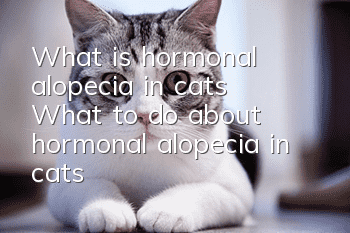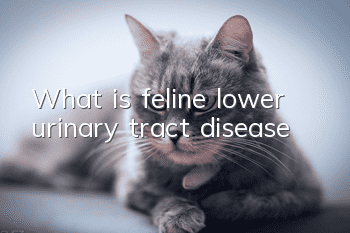What is hormonal alopecia in cats? (What to do about hormonal alopecia in cats?)

The biggest problem for modern people is hair loss. One of the causes of hair loss is hormonal alopecia: there is a male hormone called dihydrotestosterone in the human body. Due to the increase of dihydrotestosterone in the scalp, the hair follicles become smaller. , the hair also becomes smaller and thinner, and eventually becomes completely necrotic, leading to androgenic alopecia. Who would have thought that cats could suffer from hormonal hair loss? Today let’s talk about hormonal hair loss in cats.
Pathological conditions and symptoms of hormonal alopecia in cats
Hormonal alopecia in cats refers to hair loss caused by abnormal secretion of hormones that regulate organ function. One of the characteristics of hormonal alopecia in cats is "symmetrical hair loss" that often occurs on the abdomen and both sides of the body. However, the specific symptoms vary due to different hormonal abnormalities
Causes of hormonal alopecia in cats
Cat hormonal alopecia is divided into the following types:
1. Glucocorticoid abnormalities:
In Cushing's syndrome, the effect of corticosteroids is increased, hair loss in the body is widespread and symmetrical, and other symptoms such as cutaneous calcification, skin atrophy and softening and subsequent pyoderma are also observed. There are many causes of Cushing's syndrome, including genetics, brain tumors, and adrenal gland tumors.
2. Sex hormone abnormalities:
Excessive estrogen secretion in female cats can lead to symptoms such as hair loss around the genitals and anus, interference with the estrous cycle, and reduced fertility. Additionally, in neutered males, slow hair loss may occur on the rump, base of the tail, and sides as testosterone decreases.
The causes of sex hormone abnormalities include congenital and ovarian abnormalities (type I or type II). Type I lacks estrogen and type II has an excess of estrogen. There are also acquired causes of sex hormone abnormalities, including testicular tumors or changes in hormonal balance due to sterilization.
3. Abnormal thyroid hormone:
In hypothyroidism, symptoms such as slow movement, hot and cold weakness, body swelling, and rare cases of bilateral trunk hair loss and pigmentation may occur. Causes of hypothyroidism are autoimmune diseases, thyroid atrophy, effects of Cushing's syndrome.
4. Growth hormone abnormalities:
Symptoms of growth hormone deficiency include symmetrical hair loss, skin weakness, and hyperpigmentation on the neck, thighs, and hamstrings. Most of them are congenital, with symptoms visible from 2 to 3 months of age, but in some cases it is acquired, although it is rare in cats.
Treatment of hormonal alopecia in cats
The treatment of hormonal alopecia in cats is mainly divided into the following two aspects:
1. Treatment of potential diseases
If hormonal alopecia is caused by another disease (such as a tumor), treat those underlying conditions first.
2. Hormone management
A variety of medications are given to replace missing hormones and suppress the production of excess hormones. However, due to the high risk of side effects, always follow your doctor's advice.
I hope every kitten has lush hair!
- Is the cat okay after drinking some tea?
- Diet precautions for cat mothers during pregnancy and lactation
- How to tell if a kitten is healthy?
- What are the symptoms of gastrointestinal disease in cats? How to treat cat gastroenteritis!
- What's wrong with the black stuff on the cat's mouth?
- Can cats drink milk tea?
- What vaccinations are needed to raise a cat?
- How can a kitten survive without its mother cat?
- It took three days for the cat’s amniotic water to break to give birth
- Why does a cat always scratch its ears?



